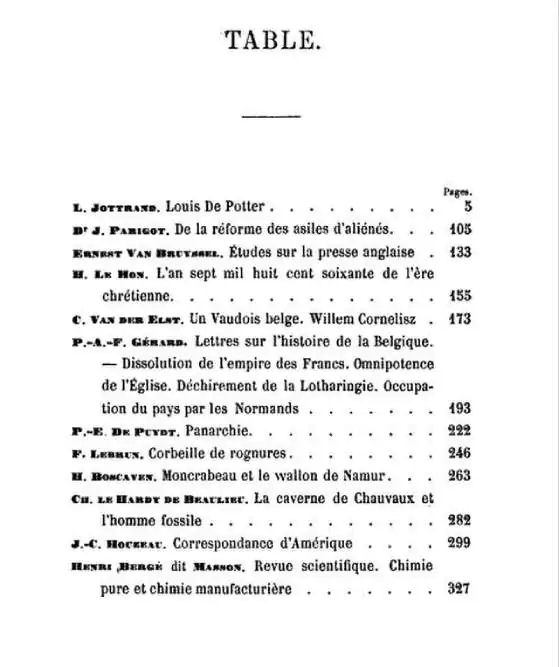Considering publishing a book? Make sure you learn the different parts of a book first so yours will have everything it needs.
Writing a book may seem straightforward, but the modern book has quite a few different parts. Understanding the parts of a book is essential to formatting a book and getting it ready for publication. Books are divided into three fundamental portions.
These are:
- Front matter: This is all the information in the book before the first chapter begins.
- Body matter: These are the book chapters from beginning to end.
- Back matter: This is everything that is written after the final word of the book itself.
As you prepare to publish a book, check with the publishing company to learn about the different parts you need to include and any specific formatting rules to follow. In addition, you will likely have a style guide to look at to guide your formatting. Use this to determine which parts to include. Whether you are writing a fiction book or a non-fiction book, you will need to include some pieces of information.
Here are the 18 parts of a book that most publication companies want, as well as descriptions to help you understand what they should include.
Contents
- 18 Parts Of A Book
- 1. Front Cover
- 2. Title Page
- 3. Copyright Page
- 4. Dedication
- 5. Table of Contents
- 6. Foreward
- 7. Acknowledgments
- 8. Preface or Introduction
- 9. Prologue
- 10. Body
- 11. Afterword or Epilogue
- 12. Appendix or Addendum
- 13. Glossary
- 14. Bibliography or Endnotes
- 15. Index
- 16. Author Bio
- 17. Intro to the Next Book
- 18. Back Cover
18 Parts Of A Book
1. Front Cover

The book’s front cover contains the title, author, and illustrator names. In addition, it will contain cover art that grabs the reader’s attention. The front of the book will also contain the edition number if that applies to the book. If the book is hardcover, then it may have a dust jacket. The dust jacket is a paper cover for the book. Books with a dust jacket may have the cover art and information on the jacket, not the actual cover. If the book contains a dust jacket, it often has a summary inside the fly.
2. Title Page
The title page is the first page of the book’s front matter. It is the same for both fiction and nonfiction books. It contains the title of the book and the author or authors’ names. If there is a subtitle, which is more common with nonfiction than fiction books, it will be here also. The title page also includes information about the publishing company, including its name and address. This shows the most important details about the book at a glance.
3. Copyright Page
On the copyright page, the book will include the legal copyright notice and any other copyright notices necessary for the book. It also contains the Library of Congress catalog identification and the ISBN. If the book contains any legal disclaimers, this will also be part of the copyright page. The credits for illustrators, photographers, and book designers may also go here. If there is a specific address to contact for permission to reproduce portions of the book, that information goes on the copyright page.
4. Dedication
Many authors dedicate their book to a person or group, mainly when writing fiction works. This part of the front matter is usually short. It may span just a sentence, but it is important enough to get its page. The range of people an author can choose to dedicate to work to varies. Many will dedicate it to a supportive spouse or family member during the book’s writing, but some will choose to dedicate the book to someone who helped with research and the actual writing. Also, there are no specific rules about how many people can receive a dedication.
5. Table of Contents

The table of contents is more common in a nonfiction book than in a fiction book. This part of the book tells what is in the book by listing the chapter titles. It also shows what page numbers contain the sections or chapters. If the chapters are titled, the titles go in the table of contents. The table of contents can give a reader a quick place to reference what is in the book and how it flows. This guide helps the reader know if the book will give them the necessary information.
6. Foreward
Some books contain a forward as part of the front matter. This short section of the book is from another author, presumably someone who has read the book. It summarizes the book and provides an endorsement for it. For a foreward to be powerful, it needs to be from someone known by the target audience. For non-fiction works, this is often a well-known colleague or associate. For fiction works, it may be another published author whom people trust.
7. Acknowledgments
Often the author of a book needs to thank some people who helped or inspired them. This is different than the dedication, which is often quite personal. The acknowledgments page lets the author list all of the people who helped. This is often an important section of a book if the writing requires quite a bit of research. However, authors may also want to add this section simply because they have a few people to thank.
8. Preface or Introduction
In the preface, the book‘s author can explain their purpose for the book. The intro can be several pages, or it can be just one short paragraph. This book section aims to help people understand the reasoning behind the book and set the platform for its framework. A preface can also explain how the authors did the research for the book, which is important if the subject matter is scholarly in tone or purpose.
9. Prologue
For works of fiction, a prologue is more common than a preface. The prologue is often written as if it were from the narrator’s point of view or voice. Sometimes the author will create a prologue from a different narrator’s point of view or offer a prologue from the main narrator’s point of view, but at a later point in their life. Regardless of who voices the prologue, it has a single goal: to set the stage for the story. The prologue can be crucial in helping the reader understand the setting, or it can provide the foundation for the main plot point. It should add value to the story but not necessarily be part of it.
10. Body

The body of the book is the main story or information. It is divided into chapters for most books, including fiction and nonfiction. The chapters can also have divisions into sections to make the workflow better. The book’s content is the story itself if you are writing a fiction story. If you are writing a nonfiction book, then each chapter will be one particular part of the information you are providing throughout the book.
11. Afterword or Epilogue
The afterword or epilogue starts the back matter of the book. This end material offers references and biographical information about the author. The afterword is where the author adds comments to the body matter in a nonfiction work, while an epilogue allows the author to add some closure to the story to tell what happened to the characters in the future. Finally, the epilogue gives the author a place to tie up any dangling loose ends in the overall story.
12. Appendix or Addendum
Sometimes a story will need additional documents at the end of the body to add support to the story or information. This becomes part of the appendix or addendum. For example, an author writing an informative research-based piece may choose to add an appendix that shows some charts or similar information about the topic. An addendum occurs when someone gets new information to add to a book but doesn’t want to publish an entirely new addition. This allows that information to be added to the current edition to keep it relevant and valid, even in light of new information that has become known.
13. Glossary
The glossary is a list of terms that are necessary for the reader to understand the work. It often has the terms listed in alphabetical order on the left-hand side of the page, followed by the definitions to the right. While glossaries are standard in non-fiction works, sometimes fiction works can also have them. For example, if a fiction book has a lot of geographically-focused dialect or terminology, the author can use a glossary to define those terms. Likewise, readers can reference the glossary if they come across terms or words they do not know when they read the book.
14. Bibliography or Endnotes
The bibliography page at the end of the book tells where the author got the information provided throughout the book. This may be formatted according to the APA or Chicago Manual of Style rules, depending on the type of publication. The bibliography is critical to allow readers to fact-check information in a book. Endnotes, on the other hand, serve as notes connected to the content that further explain the content. However, they show up at the end of the book in the back matter instead of on the footer of the page.
15. Index
For non-fiction works, the index allows the reader to find terms within the book. It contains an alphabetical list of important terms, followed by page numbers on the right-hand margin. Readers can look up the topic they wish to research, and then find the page it is located on within the book. Fiction works rarely have an index. Since they do not get used for research, having an index rarely makes sense.
16. Author Bio
The final section of most books is the author biography. This is where the author can tell a little more about themselves and how their experience relates to the book’s content. If they have written bestsellers in the past, this may be part of the bio as well. Not all books require or even benefit from an author bio as part of the back matter. The book may not contain this section if the author’s background information is irrelevant to their publication.
17. Intro to the Next Book
If a fiction book is part of a series, the author may choose to write an introduction or include the first chapter of the next book in the series in the end matter. This will hook the reader and get them excited about the launch of the next work in the series. This can be included if a publication date or general timeline is known. Again, the more information about the new book added, the better the chances are that people will be ready to buy it when it hits the bookshelves.
18. Back Cover
The book’s back cover is often where the author will place a bit of a teaser about what is in the book. For the fiction work, this would be a short summary of the story to hook the reader and make them want to read. For a non-fiction book, this is usually the basic idea that is in the book. The back cover may include the book’s price and a short author bio; sometimes, it also contains a picture of the author. Though less common than the front cover, the back cover may contain some cover art.
For more help, check out our step-by-step guide on how to write a book!